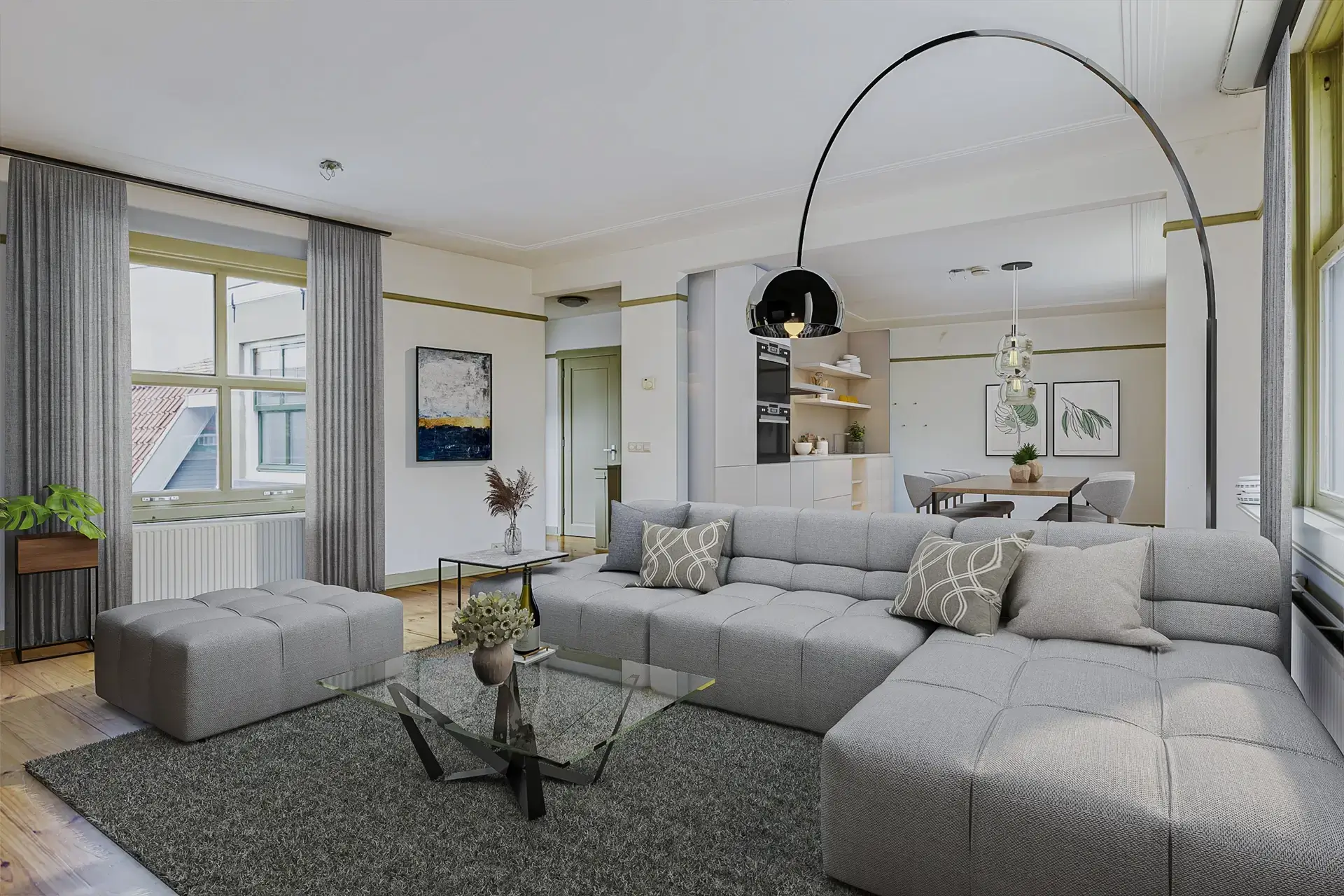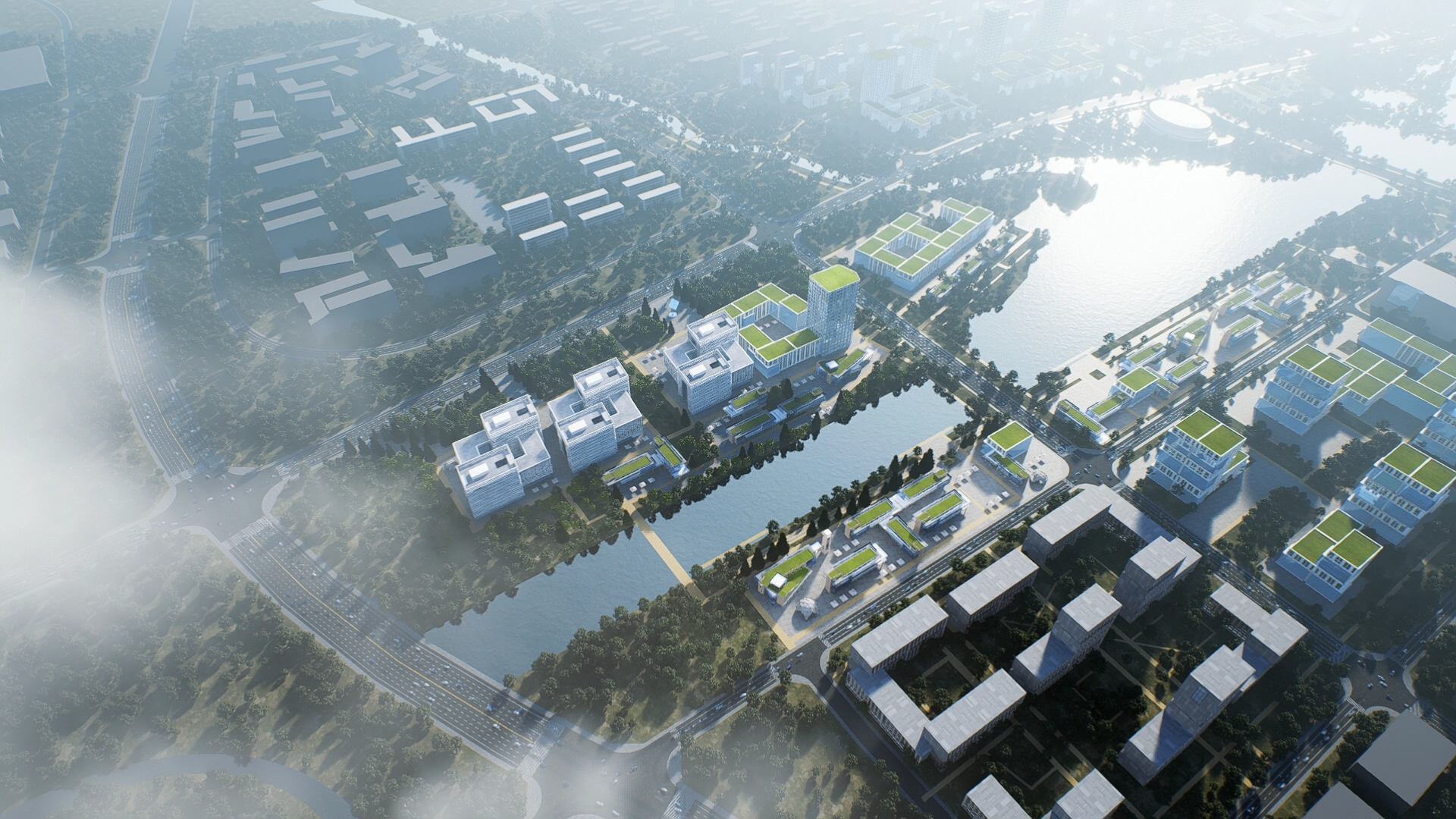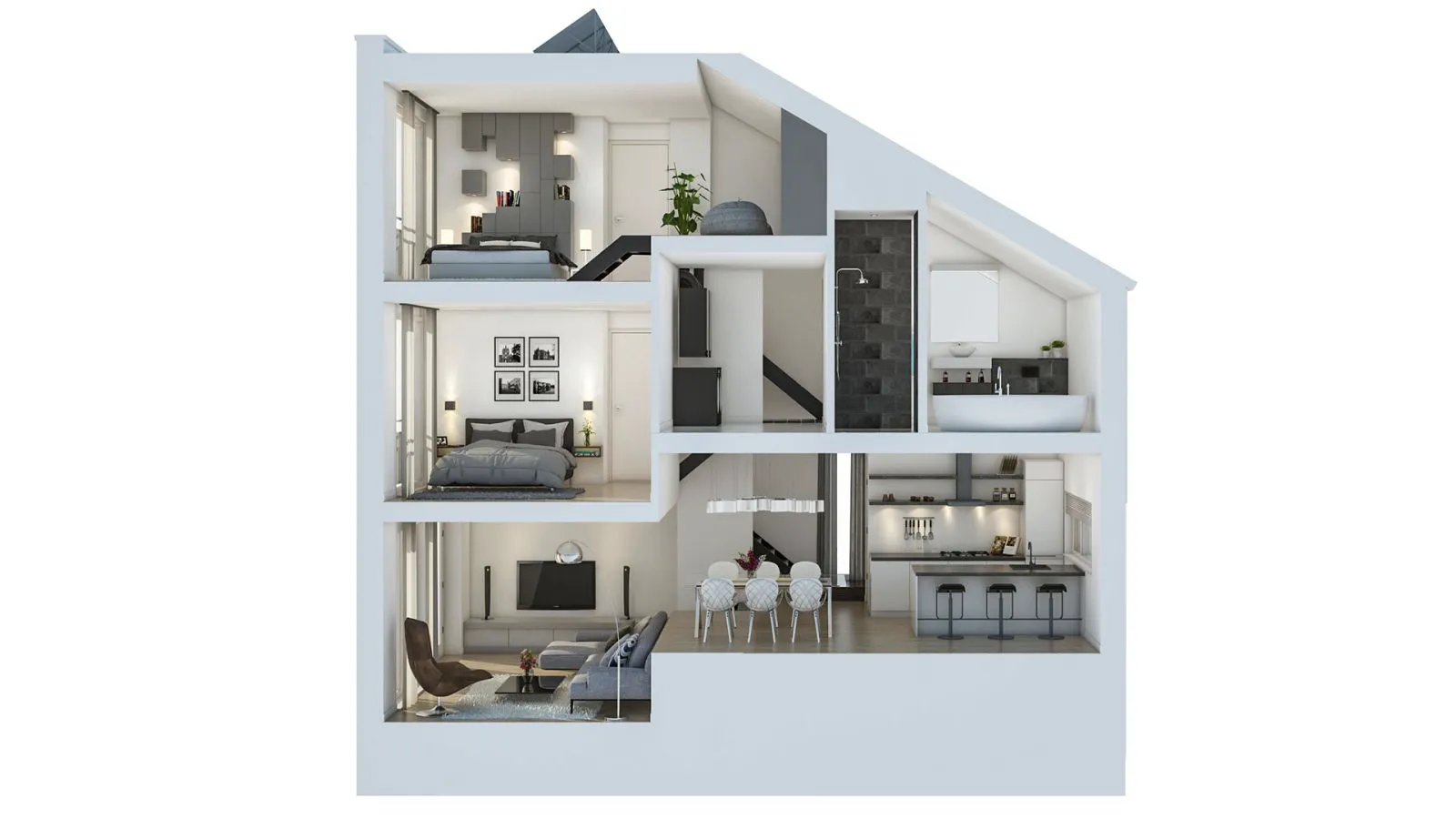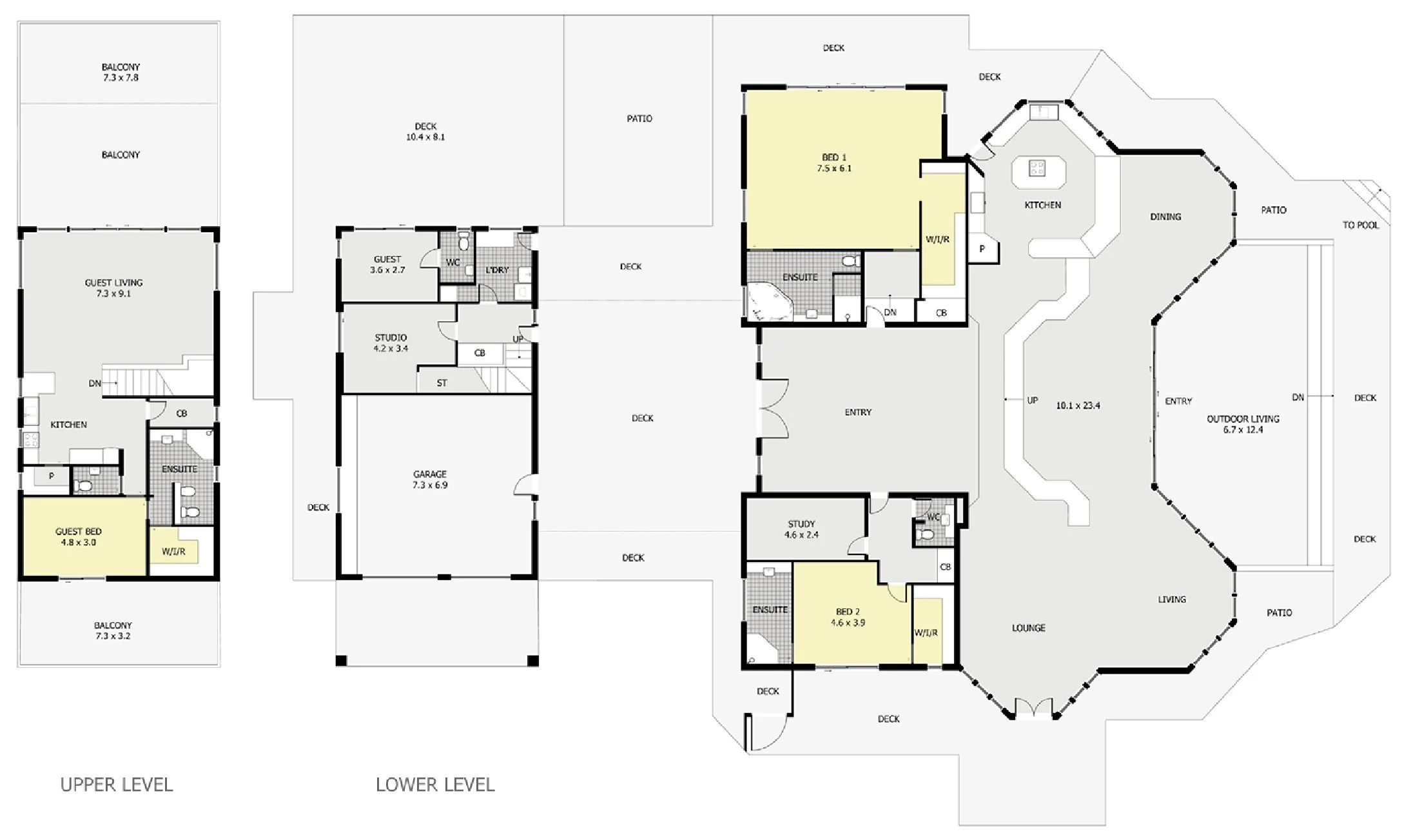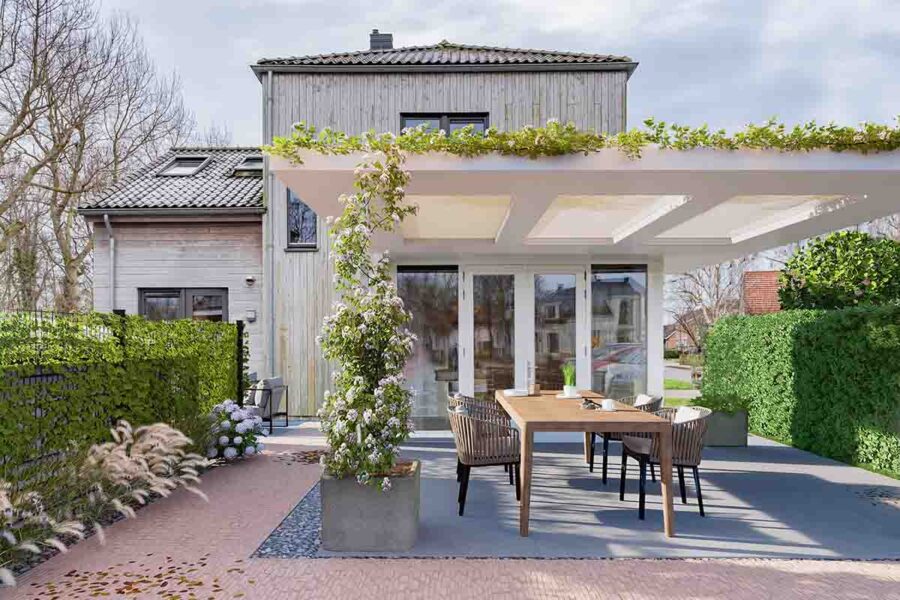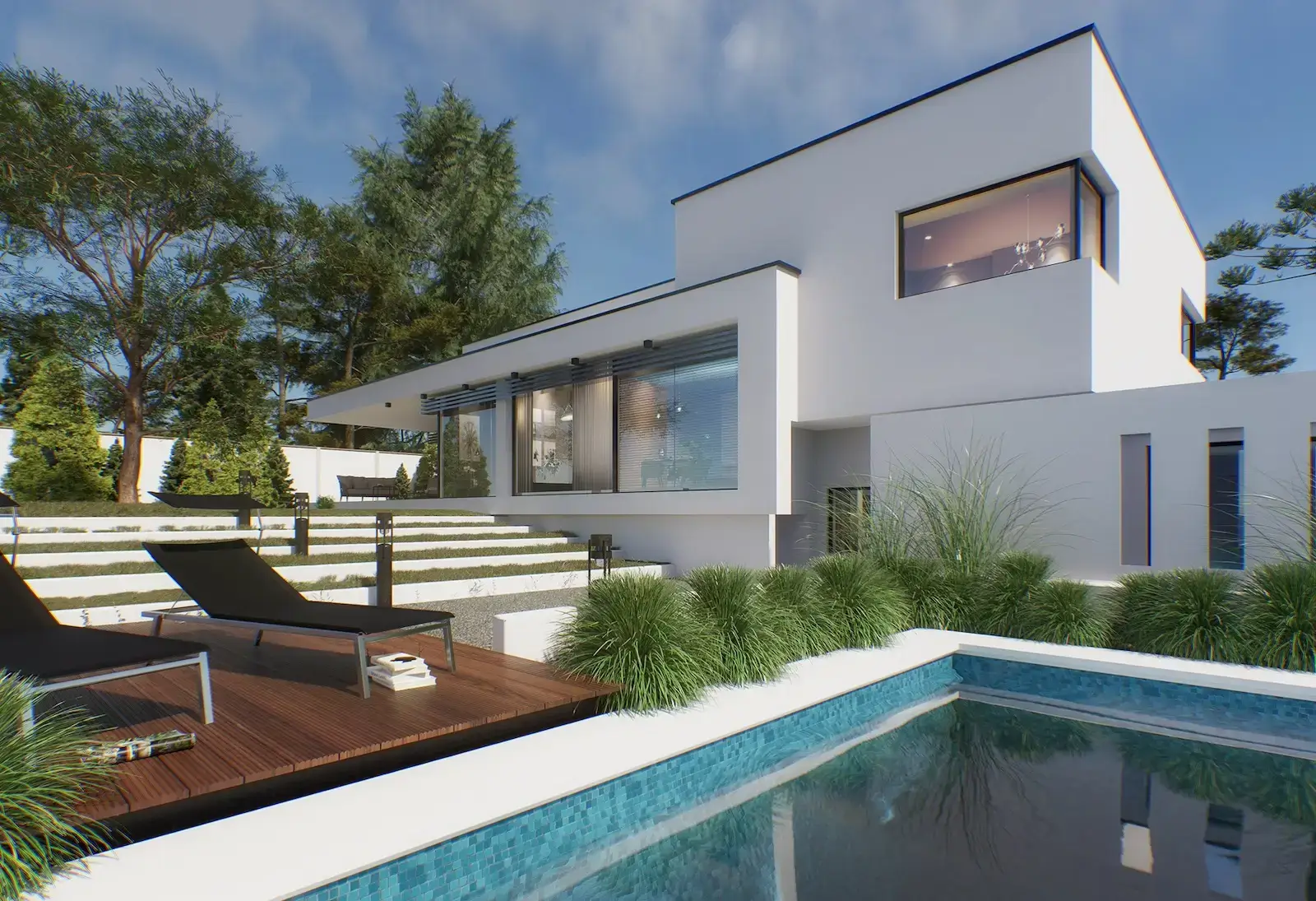
Introduction
This is your detailed guide on photorealistic rendering. In this blog post, we’ll explore the fascinating process of creating lifelike digital images that closely resemble photographs.
Whether you’re an architect, interior designer, property developer, real estate agent, or simply curious about the magic behind realistic visualizations, this guide has something for you.
Let’s dive in and uncover the key techniques, benefits, applications, and future trends of photorealistic rendering.
Key takeaway
Photorealistic rendering is the art of creating lifelike digital images that closely resemble photographs. It involves modeling, adjusting lighting, shadows, camera angles, and details to achieve a realistic appearance. This technique is widely used across various industries such as architecture, interior design, and real estate to visualize house redecoration, property refurbishments and designs before they are actualized.
What is photorealistic rendering?
Photorealistic rendering makes 3D digital images look just like real photos by adjusting lighting, shadows, and details. It’s used in many industries like architecture, interior design, and real estate to show what a project or property will look like before they’re constructed or refurbished.
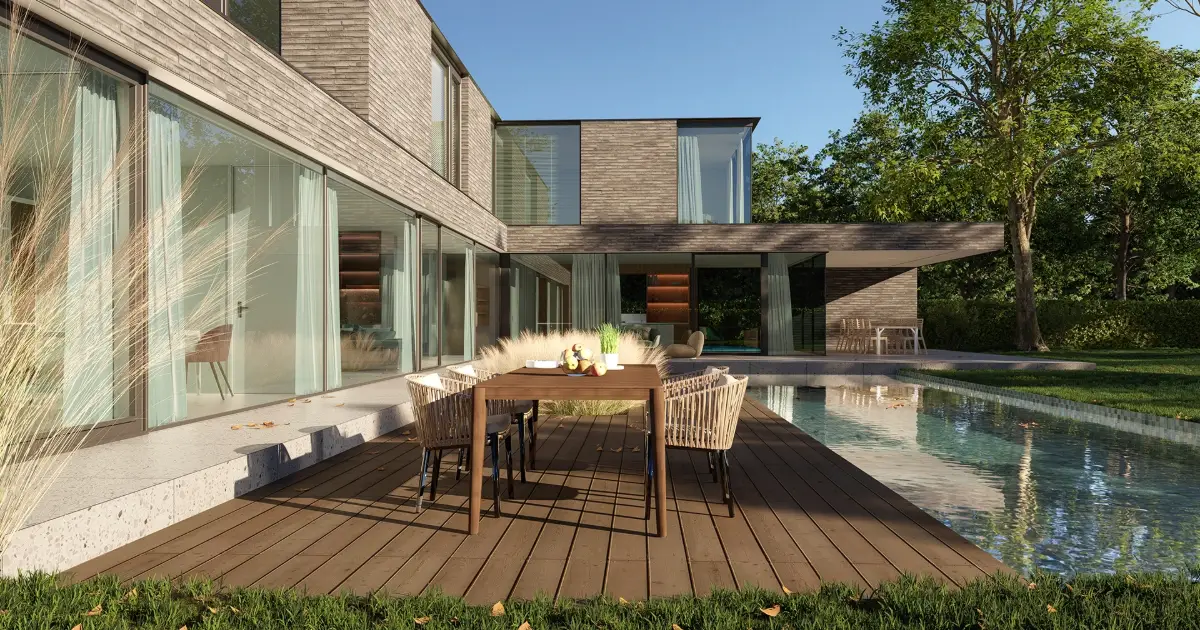
Key Components of Photorealistic Rendering
Creating photorealistic renderings involves several key elements, each crucial for achieving high-quality visualizations:
- Design a project: A solid design project forms the foundation of any visualization. It includes detailed plans, technical drawings, furniture specifications, and mood boards. Having comprehensive design materials ensures accuracy and efficiency thus speeding up the visualization process.
- 3D Modeling: 3D modeling is essential for recreating objects with lifelike accuracy. Achieving a 1-to-1 similarity with real objects (also called a ‘digital twin’) is vital for realistic renders. Models can be created from scratch or one can use paid libraries and models from manufacturers’ websites, performing complex modeling tasks without compromising quality.
- Lighting: Proper lighting setup is fundamental for creating realistic visualizations. Balancing global lighting, adding atmospheric effects, and adjusting internal light sources help enhance realism and atmosphere in the render. Thoughtful lighting choices significantly impact the perception of the scene.
- Materials Creation: Creating realistic materials involves considering factors like lighting, color combinations, and texture details. Fine-tuning materials ensure that they respond accurately to light and contribute to the overall realism of the scene. Iterative adjustments are often necessary to achieve the desired visual impact.
- Camera Setup: Choosing the right camera angle is crucial for showcasing the project’s strengths and minimizing weaknesses. While there are no strict rules, selecting appropriate depth of field, focal lengths and angles enhances the viewer’s perception of space. A well-planned camera setup maximizes the visual impact of the rendering.
 The importance of photorealistic rendering in various fields
The importance of photorealistic rendering in various fields
Photorealistic rendering holds immense importance across various fields, revolutionizing how designs are visualized and communicated. Whether in architecture, interior design, real estate, or hospitality, photorealistic rendering offers a cost-efficient solution for showcasing projects before they’re finalized.
Providing realistic visuals enables you to gain a clear understanding of the project’s aesthetics, functionality, and ambiance. This clarity helps in better decision-making, enhances client engagement, and simplifies the design process, ultimately leading to more successful outcomes across industries. Photorealistic rendering serves as a powerful tool for bringing ideas to life and shaping the future of design and innovation.
The Process of Photorealistic Rendering
Creating photorealistic renderings involves using special software that can mimic real-world lighting, textures, and materials to make a highly realistic image. Here’s a simple breakdown of the steps:
1. Modeling: First, a 3D model of the environment and objects is created using software like Autodesk Maya or 3Ds Max.
2. Texturing: Next, textures are added to the surfaces of objects to make them look like real materials, using mathematical algorithms within the software.
3. Lighting: Virtual lights are strategically placed in the scene to create the desired lighting effects, such as reflections and shadows, to make the scene look realistic.
4. Rendering: The final image is generated by specialized software, which calculates the color and position of each pixel based on the 3D model, textures, and lighting.
5. Post-processing: Finally, the rendered image can be further enhanced using software like Photoshop, where adjustments like color correction and filtering can be applied to improve the final result.
How to create photorealistic 3D visualizations: Best practices and tips
- Bevel application: Adding bevels to 3D renders makes objects look more natural by avoiding sharp edges.
- Photometric lighting: Using photometric lighting, especially with IES light profiles, mimics natural lighting more realistically.
- Blurred background effects: Adding depth of field blurs the background, bringing objects to the foreground for a more realistic feel.
- Chromatic aberration: Introducing subtle color fringing along high-contrast edges enhances realism without overdoing it.
- Specular maps: Specular maps highlight areas needing glossiness, adding realism to 3D models.
- Textures: Incorporating fine textures like wood or metal enhances the realism and helps convey meaning.
- Natural effects: Including natural elements like cracks adds authenticity and a human touch to renders.
- Asymmetry: Embracing asymmetry adds natural appeal, as real-life objects rarely exhibit perfect symmetry.
- Final renders: Making final adjustments like managing contrasts and colors enhances realism before completion.
- Rectifying common mistakes: Addressing errors in light placement, proportions, textures, and image management improves the overall natural look of renders.
Discussion on the techniques used in photorealistic rendering
Architectural visualization now heavily relies on photorealistic rendering, which is used in property advertising to engage viewers and influence buying behavior.

Photorealistic rendering techniques involve several steps to achieve realism. Adding real-world and mood lighting creates immersive experiences, while imperfections, like objects out of place, add genuineness. Realistic camera angles and the incorporation of a natural atmosphere enhance realism further. Attention to detail, such as textures and objects, is crucial for creating convincing renders.
Photorealistic rendering techniques help create lifelike architectural views that help you envision your future spaces. These techniques are essential for architects and designers to master to create compelling architectural projects.
Benefits of photorealistic rendering
Using photorealistic rendering has some clear benefits.
1. Enhanced visualization: photorealistic rendering allows for accurate visualization of designs, making it easier to understand and assess projects before they are completed.
2. Cost-effective corrections: rendering enables timely adjustments to designs, avoiding costly changes after completion. You can see proposed changes beforehand, reducing the risk of misunderstandings.
3. Streamlined decision-making: realistic renders provide a clear picture of the final product, facilitating faster decision-making and project approval. This helps in expediting the project timeline.
4. Utilization of LCA principles: the power of Light, Composition, and Angle, renders can help achieve realistic and appealing images, guiding viewers’ focus and enhancing visual impact.
5. Incorporation of advanced technologies: rendering technologies like AR, VR, and 3D animation offer innovative ways to engage customers and enhance marketing strategies. These tools help businesses stay competitive in the market and attract more prospects.
Benefits in industries like real estate and architecture
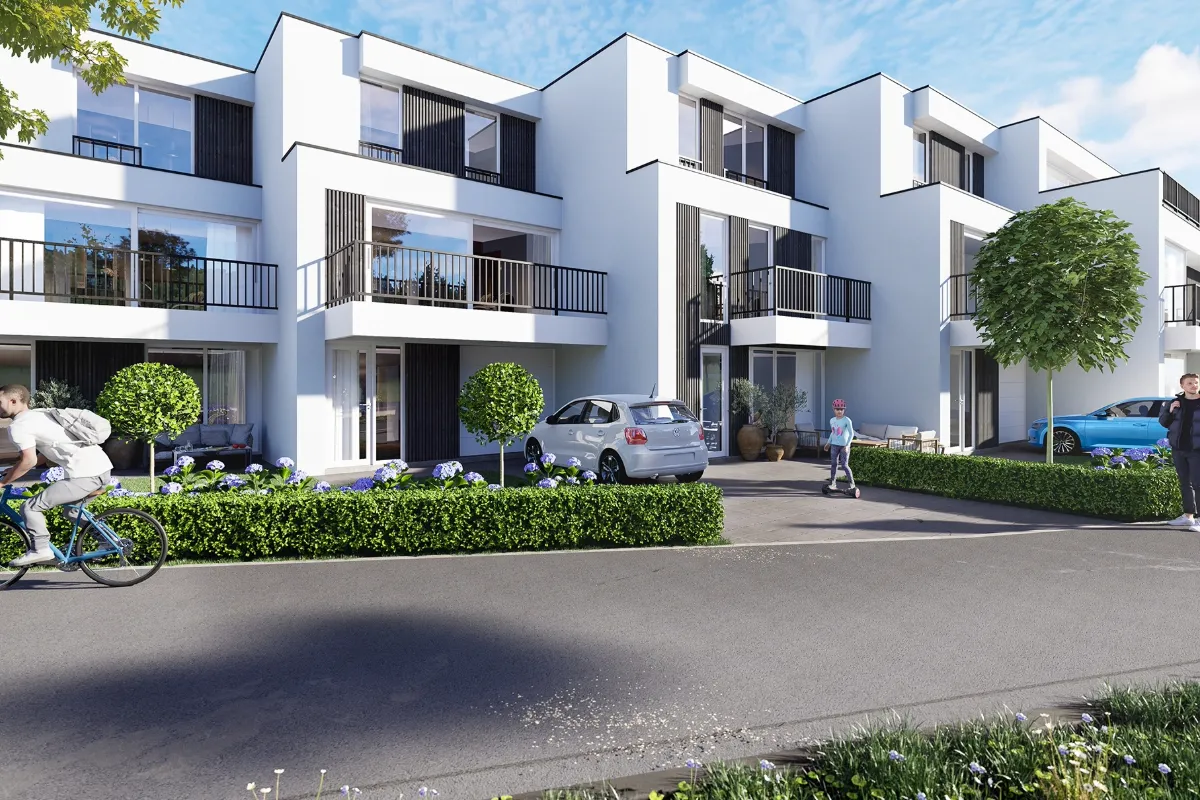
Architecture
Photorealistic rendering is revolutionizing the architectural industry by providing a more comprehensive and realistic way to showcase projects. Unlike traditional sketches or 2D models, photorealistic visualization offers a complete picture in three dimensions and allows you to fully envision your projects from every angle, even if they are located far away.
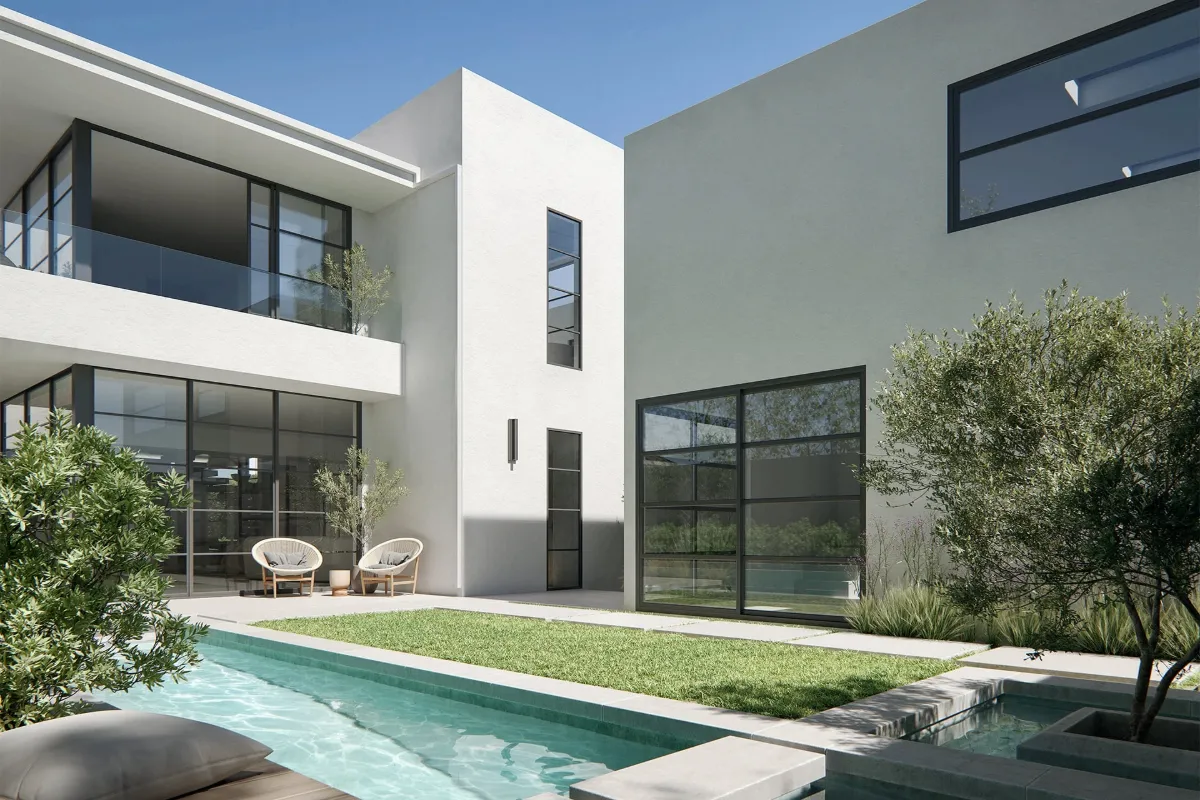
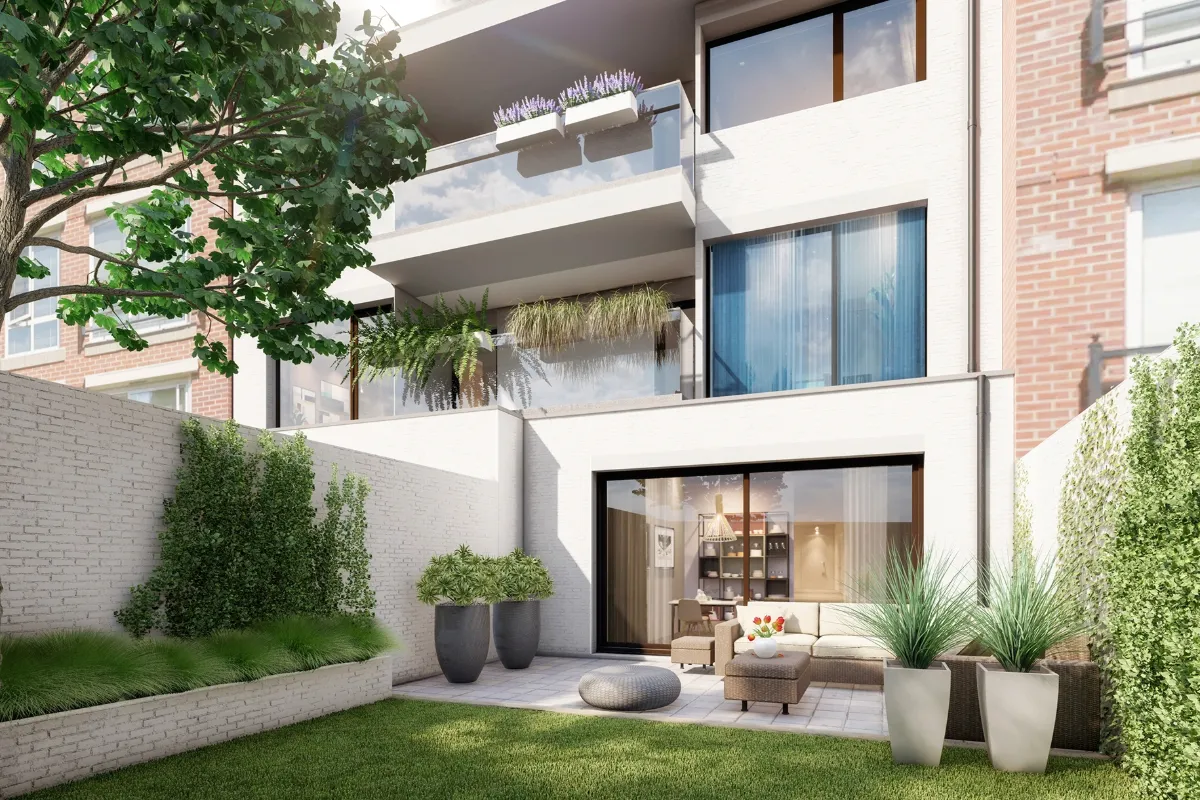
Real estate
In today’s competitive real estate market, using 3D rendering is essential for effective marketing strategies. This technology revolutionizes property visualization, allowing for better communication between realtors and buyers. 3D renderings provide a comprehensive understanding of a property’s layout and design and create stronger emotional connections with potential buyers.

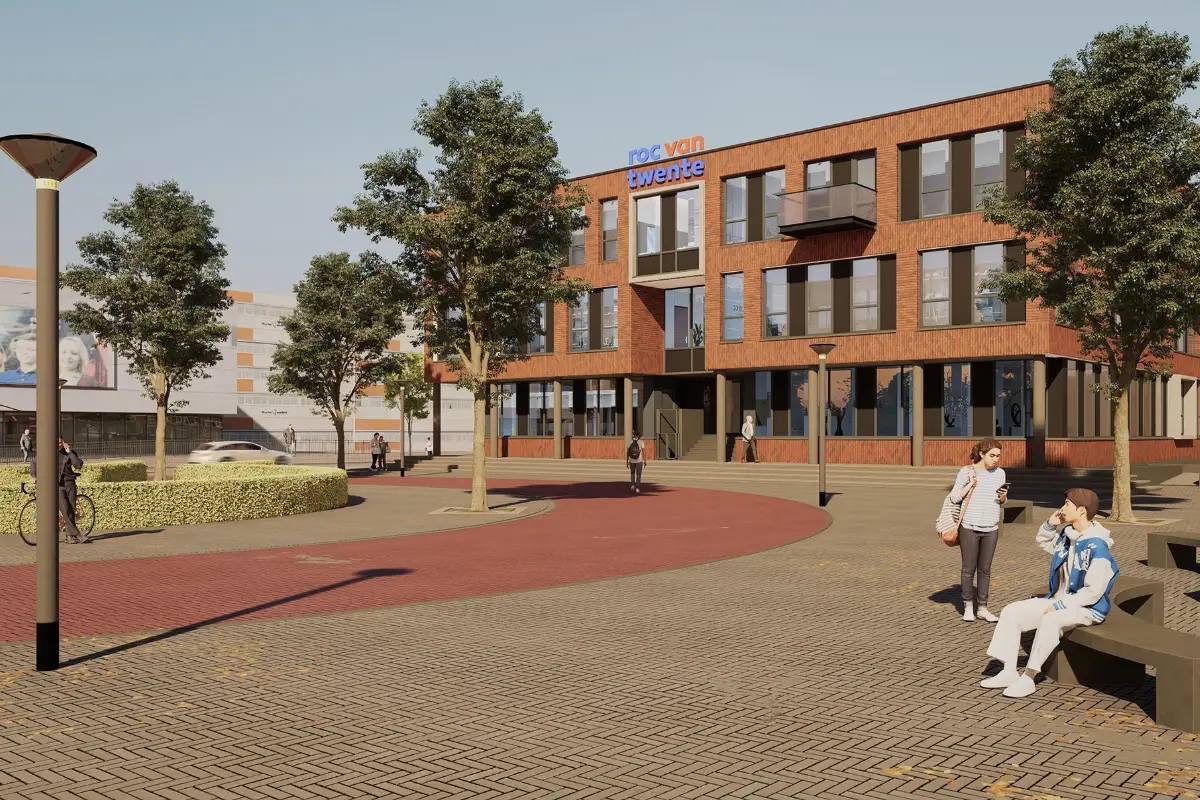
What’s the difference between photorealistic and non-photorealistic rendering?
 Differences between photorealistic and non-photorealistic rendering
Differences between photorealistic and non-photorealistic rendering
Photorealistic rendering creates realistic digital images from 3D models, using software to mimic real-world elements like lighting and textures. On the other hand, non-photorealistic rendering focuses on artistic expression, using techniques like line art and shading to convey a specific style or function.
Photorealistic rendering aims for realism, while non-photorealistic rendering explores creativity. This difference determines how the images look and feel. Photorealistic rendering is common in architecture and product design, while non-photorealistic rendering is used in gaming, animation, and technical illustration for stylized visuals.
Differences between 3D photorealistic and 2D photorealistic rendering
When 3D technology emerged, it became more popular than 2D for rendering. But both have their pros and cons. Both 2D and 3D renderings help artists and clients visualize ideas digitally. They give different results.
The key difference is in making changes: 2D images are easier to adjust because you can change one element without affecting others. In 3D, changing one thing means adjusting many interconnected elements.
So, while 3D offers more depth, 2D is simpler and more flexible for making changes.
Applications of photorealistic rendering
Photorealistic rendering is used in various fields like architecture, engineering, education, and entertainment to create realistic and immersive experiences.
1. Architecture: Architects use them to visualize projects before construction, while photographers preview how their images will look.
2. Real Estate: Agents employ rendering to showcase properties pre-construction, helping you visualize your potential.
3. Interior Design: Designers create detailed representations of spaces, helping you envision final designs accurately.
4. Video Games and Movies: From gaming environments to cinematic effects, photorealistic rendering enhances visual storytelling.
Types of photorealistic rendering services
Here are the are the photorealistic rendering services that we provide;
Tips on how to distinguish render from a photo
- Objects that are not the right size compared to each other. For example, if the chairs in a 3D living room look too small next to the coffee table, it’s a giveaway that the image is Computer Generated Imagery, also known as CGI.
- Objects with too few details, make them look rough or jagged. This happens when the 3D models used don’t have enough polygons. Realistic renders need high-detail models with lots of polygons to look smooth.
- When textures don’t match the shape of objects or look low-quality; In a good render, textures should look like they’re wrapping around objects correctly, like fabric on a sofa cushion or wood on a floor. Low-quality textures give away that it’s not a real photo.
- Objects with sharp corners that look too perfect; Real things usually have softer edges, so objects in a CGI image with sharp corners stand out.
- Images with distorted shapes because the camera settings are wrong. If things look stretched or squashed, it’s a sign that the rendering isn’t done well.
- Shadows and highlights that don’t match the lighting or materials of objects; If the shadows are in the wrong place or the highlights are too bright, it’s easy to tell the image isn’t real.
- Things look too perfect like chairs all spaced the same or cushions with identical folds. Real life isn’t that perfect, so when everything looks too uniform, it’s a giveaway that it’s not a real photo.
Best software for 3D photorealistic rendering
For 3D photorealistic rendering, Lumion, V-Ray, and Corona Renderer are top picks. Each software offers powerful tools to make your designs incredibly realistic.
Lumion
Lumion is a special software for architects that makes creating pictures and videos of buildings super easy and fun. It helps architects turn their 3D models into beautiful images and videos that show every detail of their designs. You can use Lumion with lots of other design programs like SketchUp, Revit, or AutoCAD. It has a big library of stuff like people, trees, and furniture, so you can make your designs look real. With Lumion, you can make your ideas come to life and show others what your buildings will look like inside and out. It’s all about making your designs look amazing and helping you decide what you want to do next. Lumion lets you see the future of your projects in a cool way.
V-Ray
V-Ray is a software that helps architects and designers make their projects look super realistic. It works with different design programs like SketchUp and Rhino, making it easy to use. You can use V-Ray to create amazing pictures and videos of buildings, furniture, and even 3D art. It’s known for being easy to learn and has lots of tools to make your designs look even better. With V-Ray, you can turn simple models into stunning renders that show every detail of your designs.
Corona Renderer
Corona Renderer is a rendering software that helps make digital designs look super real. It works smoothly with popular design programs like 3ds Max and Cinema 4D, making it easy for artists and designers to create awesome visuals. With Corona Renderer, you can make your scenes look amazing with its wide range of features. It also comes with lots of ready-made stuff like models, skies, and materials to speed up your work. Plus, it can use multiple computers at once to render really big projects faster. And the best part is, it doesn’t need any fancy hardware to run, just your regular computer will do.
How Blinqlab Direct can help you with photorealistic rendering service?
Elevate your designs with Blinqlab Direct’s photorealistic rendering services! Our expert team of visualization artists and renderers specializes in 3D Interior and Exterior Rendering, 360° Rendering, Bird’s Eye View, 3D Dollhouse visualization, and Floor Plan Rendering. Experience the difference with Blinqlab Direct’s unmatched professionalism and commitment to timely delivery.
Trust us to transform your concepts into captivating visual masterpieces that breathe life into your designs. With Blinqlab Direct, your vision becomes a stunning reality.
Future of photorealistic rendering
Photorealistic 3D renders will transform advertising by creating lifelike visuals, enhancing product displays, enabling personalized marketing, saving time and costs, expanding storytelling possibilities, and integrating with AR and VR technologies, revolutionizing how brands connect with their audience over the next decade.
Conclusion
Photorealistic rendering is a powerful tool that revolutionizes how designs are visualized and communicated across various industries. Creating lifelike digital images that closely resemble photographs, enables professionals to showcase projects with accuracy and realism. It also helps in better decision-making and client engagement.
With advancements in technology and rendering software, the future of photorealistic rendering holds immense potential for transforming advertising, enhancing product displays, and integrating with emerging technologies like AR and VR. As we continue to explore the possibilities of photorealistic rendering, its impact on design and innovation will undoubtedly shape the way we perceive and interact with the world around us.
FAQs
What does it mean to render a design?
Rendering is when software creates pictures or videos from a model. It’s commonly used in architecture, video games, and movies to bring designs and scenes to life.
How do you render an image of a design?
To render an image of a design, you can use 3D Photo Rendering Software like Photoshop. With Photoshop, you can create different versions of the image, add visual effects, and refine edges using tools like the “Refine Mask Tool.” This makes it easier to create precise and attractive images, whether you’re a professional or a beginner.
Why is photorealistic rendering important in architectural design?
Creating photorealistic renderings is crucial because it lets you see what the final design will look like and how it will work before it’s fully developed. This early visualization helps make changes to the design easily and quickly during the property development process.
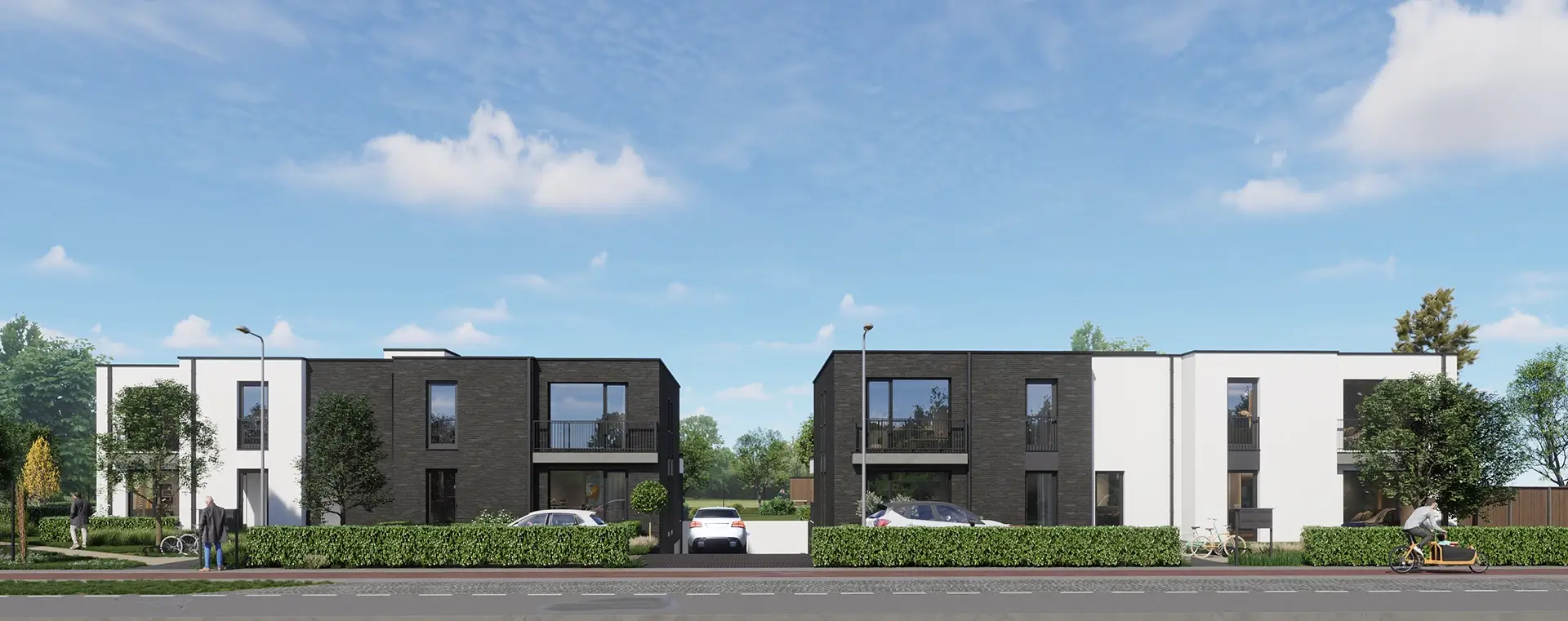

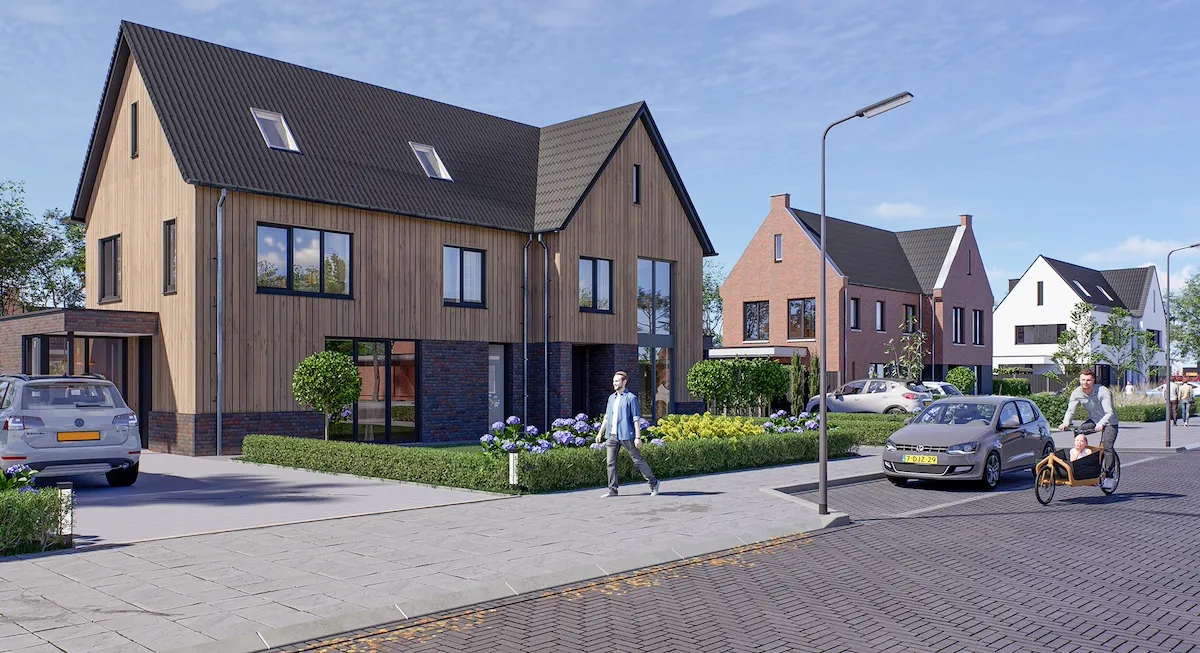 Differences between photorealistic and non-photorealistic rendering
Differences between photorealistic and non-photorealistic rendering